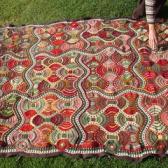The history of blood donation goes back further than you might expect, reaching as far back as the 17th century. The medical specialists of the time knew that blood was a vital element in the body and losing too much of it was bound to have tragic consequences on the patient. So it was that experimentation began, and a whole new breed of heroes was born that contribute their blood so that others may live. Blood Donors save lives every day by giving of themselves so that accident victims and those in need of transfusions for surgeries can live.
The first transfusions were done using poorly understood science and resulted in some rather tragic results for the patients. Richard Lower was the first one to examine animals and blood circulation and finding ways to stop blood clotting. While he was of course only working with animals, he managed to drain the blood off of a medium sized dog and then transfuse the blood of a large mastiff into the smaller animal. Both dogs recovered with no appreciable ill effects.
So it was that he gained great notoriety for his efforts, and was asked to speak on and teach this technique to the Royal Society. There were some odd beliefs about blood back then, and the first human transfusion involved putting the blood of a sheep into a patient who was suffering from a mild form of insanity. It was thought that perhaps the blood of so gentle a creature as a lamb might help to calm his insanity. The act of transferring animal blood into patients was strongly questioned by the tightly superstitious and morally rigid authorities of the time, and the practice was outlawed. Vanishing for 150 years.
It was an obstetrician that brought blood transfusions back into modern medical technology, starting in 1818. After he saved the life of a woman who had hemorrhaged terribly after giving birth, he started publishing works on how it was done and the study thereof. Throughout his life he performed 10 transfusions, 5 of which saved the lives of the recipients.
World Blood Donor Day celebrates the hard work and daring of these early medical professionals, and recognizes the efforts they put into developing a technology that saves so many lives today.
thanks, patty

Word of the Day
| |||
| Definition: | (adjective) Causing debilitation. | ||
| Synonyms: | debilitative, enfeebling, weakening | ||
| Usage: | The air of the place, so fresh in the spring and early summer, was stagnant and enervating now. | ||

Idiom of the Day
affable personality— A personality that is friendly, approachable, sociable, amicable, and/or likable. |

History
| |||
| Compiled by official Roman Catholic censors, Index Librorum Prohibitorum—"List of Prohibited Books"—was a catalog of works considered dangerous to the faith or morals of Catholics. The Index was never a complete catalog of forbidden reading; rather, it contained only works that the ecclesiastical authority was asked to act on. The first catalog of banned books to be called an index was published in 1559. Its publication ceased in 1966. | |||
| |||
| Landsteiner was an Austrian-born American medical researcher who was awarded the 1930 Nobel Prize in Physiology or Medicine for his discovery of the four basic human blood groups—A, B, O, and AB—which enabled the first successful blood transfusion to be performed in 1907. He was also involved in the discovery of the polio virus, and he helped identify the human blood protein known as the Rh factor. | |||
| |||
| President Woodrow Wilson issued a proclamation that established June 14 as Flag Day in 1916, but it didn't become official until 1949, after a campaign by Bernard J. Cigrand and the American Flag Day Association. American homes and public buildings across the country display the American flag in observation of the holiday. Other popular events on this day include flag-raising ceremonies, the singing of the national anthem, and the study of flag etiquette and the flag's origin and meaning. | |||
| |||
| Researchers say they've developed a blood test that detects an early stage of Alzheimer's disease with "unparalleled accuracy." | |||
1777 - The Continental Congress in Philadelphia adopted the "Stars and Stripes" as the national flag of the United States. The Flag Resolution stated "Resolved: that the flag of the United States be made of thirteen stripes, alternate red and white; that the union be thirteen stars, white in a blue field, representing a new Constellation." On May 20, 1916, President Woodrow Wilson officially proclaimed June 14 "Flag Day" as a commemoration of the "Stars and Stripes."
1834 - Cyrus Hall McCormick received a patent for his reaping machine.
1834 - Isaac Fischer Jr. patented sandpaper.
1922 - Warren G. Harding became the first U.S. president to be heard on radio. The event was the dedication of the Francis Scott Key memorial at Fort McHenry.
1951 - "Univac I" was unveiled. It was a computer designed for the U.S. Census Bureau and billed as the world's first commercial computer.
1965 - Paul McCartney recorded the song "Yesterday."
1971 - In London, the first Hard Rock Cafe opened.
1990 - The U.S. Supreme Court upheld police checkpoints that are used to examine drivers for signs of intoxication.


| Picture of the day | |
 |
During the Battle of Seven Pines, part of the Peninsula Campaign of the American Civil War, Confederate troops under General Joseph E. Johnston attempted to overwhelm two Union corps. These corps, located south of the swollen Chickahominy River, appeared isolated as most bridges across the river were out. Upon hearing the sounds of battle, Union Maj. Gen. Edwin V. Sumner of II Corps ordered a division, under Maj. Gen. John Sedgwick, to cross the Grapevine Bridge. Though unstable in the raging river, the bridge held long enough for Sedgwick's men to successfully cross and help fight away the Confederate forces.
|
READER'S CORNER!
go look through SUSAN'S blog for crafty inspiration!
A Maze of Grass
A herd of elephants makes its way through Botswana’s Okavango Delta. “These animals move through the shallow waters of the delta easily, leaving behind water channels which, seen from the air, form a large mosaic of green mazes,” writes photographer Gaston Piccinetti.

knit
Kawaii steering wheel cozy pattern by Jennifer Gaspar Schreiner
knit
knit
knit
knit, newborn
Short Sleeved Perfect Baby Boy or Girl Top Down DK Jacket pattern by marianna mel
.gif)
crochet
crochet
crochet

RECIPE

CROCKPOT RECIPE
.gif)
SWEETS, crockpot

CRAFTS
my favorite book ever!
CHILDREN'S CORNER ...


QUOTE





EYE OPENER
thanks, helen
sculptures made from nothing but wrenches





















Fascinating so all that fine furniture before 1834 was not a product of sandpaper?!
ReplyDelete